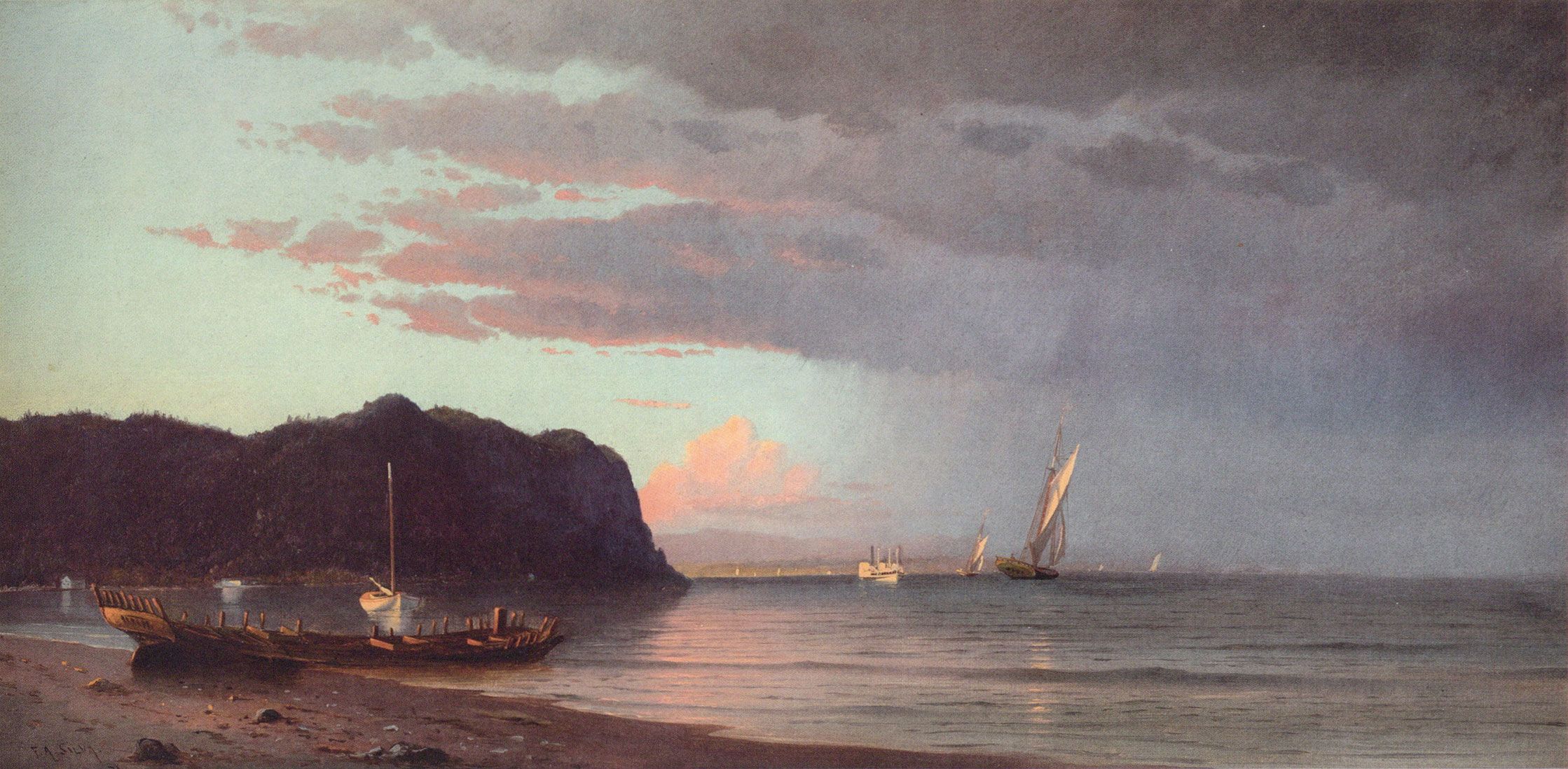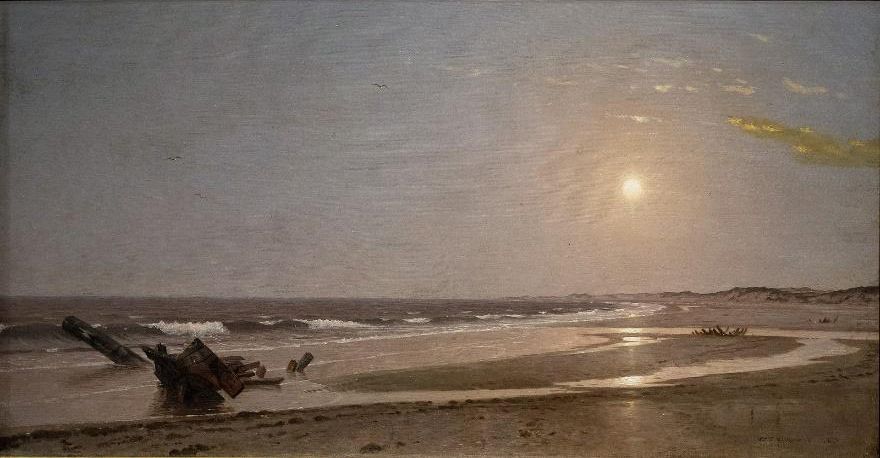
Francis Augustus Silva (1835–86)
Approaching Storm, 1871
Oil on canvas
McMullen Museum of Art, Boston College, Carolyn A. and Peter S. Lynch Collection, 2022.57

Jeffery Howe
Professor Emeritus, Art History

Born in New York City, Silva was essentially self-taught as an artist. As a young man, he was apprenticed to a sign painter and opened his own shop at age twenty-three. Silva served in the Civil War and became a captain in the New York State Militia’s Seventh Cavalry. Influenced by the Hudson River school and the luminists, he specialized in landscapes and seascapes. His earliest known painting is titled Cape Ann. In 1880, he moved to the seacoast resort town of Long Branch, New Jersey. The location of this scene is unknown.
Approaching Storm shows a variety of vessels off the coast as a rainstorm moves in. Although most are sail-powered, a distant steam ship is found near the center of the canvas. The contrast of old and new generations of technology is heightened by the skeletal frame of a small ship pulled partly onto the shore. The horizon is low, and the dramatic clouds are balanced by a shadowed promontory at left. The wrecked hull is at the end of its life, while the boat at anchor and sailing ships and steamboat embody different stages of life and progress. The motif of wrecked ships appealed to many artists such as William Trost Richards (1833–1905), who similarly combined realism with a Romantic theme of the transience of life (see image). The coming storm is no hurricane—the seas are calm—but a part of the cycles of nature. Silva’s seascapes are seemingly modest, but he insisted that “a picture should be more than a skillfully painted canvas; —it must tell something.”

